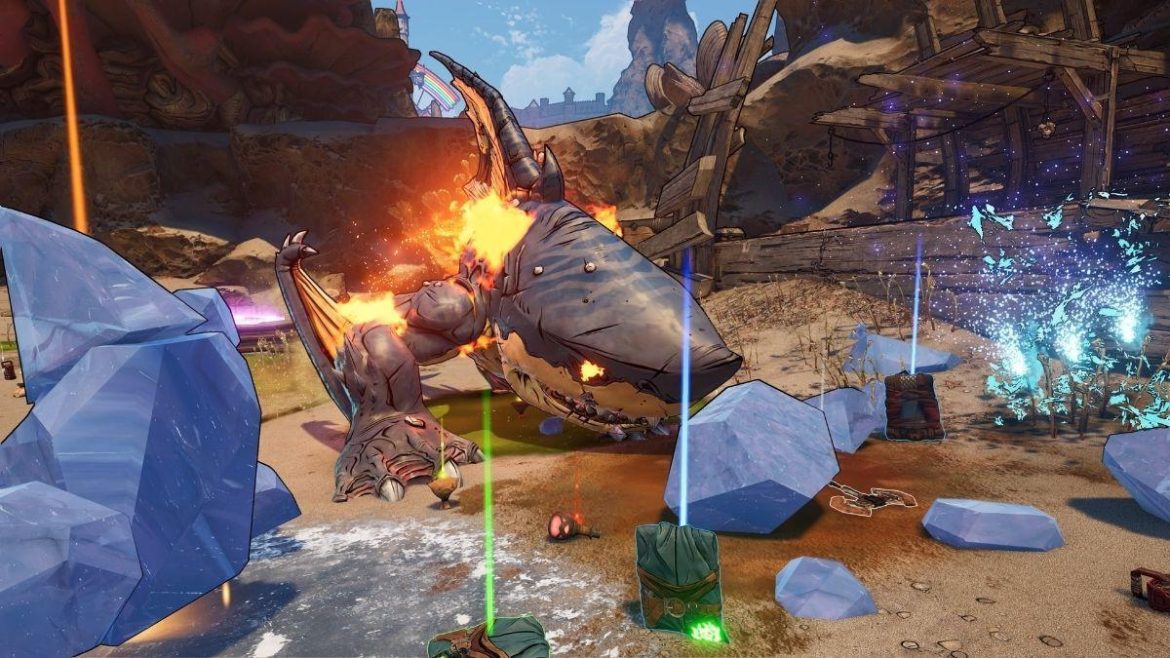Welcome back readers.
Thanks for your patience while I took an extra day with this week’s issue to make sure I was happy with it. A weird spectral echo of E3 is still going on this past week, and if you’ve been feeling humdrum about too many shoot games or space horror games or what-have-you, allow me to segue very smoothly and authentically into plugging that Queer Games Bundle still on Itch for the next little bit, as well as extend an ongoing invitation to tag any critical responses you have to any of those games with the #TWIVGB hashtag so I can read them.
This Week in Videogame Blogging is a roundup highlighting the most important critical writing on games from the past seven days.
It Stands for EEEEEEEEE
In the spirit of the Not-E3 that has been hesitatingly drip-fed through livestreams over the past week, we’re opening this week’s issue with a variety of industry-minded reflections, conversations, and critiques.
- Game Design Mimetics (Or, What Happened To Game Design?) | kyle kukshtel’s game dev/design blog
Kyle Kukshtel unpacks the industry conservatism at the root of the homogeneity, repetition, and endless re-releases and remasters in popular games. - How to Make the Video Game Industry Greener | WIRED
Lewis Gordon chats with Ben Abraham about how the games industry must participate in and transform itself for an ecologically sustainable future (Curator’s note: Ben is a founder of and current board member for Critical Distance). - Gamers like you and me – GlitchOut
Oma Keeling wonders who all these industry showcases are actually for, even when they’re ostensibly for “us”.
“Over and over and over, the games industries have been, like most things run by entertainment giants – financially risk heavy (falling on the workers), socially conservative, labour intensive and generally reactionary, doubling back constantly in attempts to protect interests, earn funding and find the thing that you will put a thousand hours of your time (money) into. A showcase like ‘Day of the Devs’ doesn’t exist outside of that dynamic, it’s just the part of it that’s aimed at ‘gamers like us’.”
House and Village
Next up, a pair of perspectives on spaces and places in games, the values they convey, and the design intentions they reflect.
- ihobo: The Beautiful Closed World of Shenmue III
Chris Bateman contrasts the Shenmue series’ world design with the more ubiquitous open-world format to get at what the former is really all about, narratively and experientially. - THE OLDEST HOUSE | DEEP HELL
Sam Moore considers the reverberations and reflections between developing characters and transforming settings in games like Control and Returnal.
“It’s these points of tension – between the physical and psychological; past and present; home and what lies beyond it – that animate both the characters and the shifting worlds that they inhabit. By taking root in uncertain places, like how much of Selene’s life she can remember, and what the fragments of memories in The House might be leading her towards, it creates a landscape, both literally and metaphorically, that is full of transformative potential.”
Other Lands
Now, a broader examination of the intersections between game worlds and our own, and what’s at stake in tracing those connections.
- Proud Pixels – Tiny Tina’s Wonderlands and Queer Escapism — startmenu
Jordan Black, via Tiny Tina’s Wonderlands, wonders about the real meaning of escapism–to hide from it all, or to seek a space where it’s safe and welcoming to process, to reflect on our lives and the world around us. - Thoughts on Norco | Innuendo Studios
Ian Danskin begins to make sense of Norco, both as a standalone work of art and as situated in a larger conversation with the most influential and important adventure games of the last decade.
“Norco is about cults of angry white boys in polo shirts. Norco is about the bloodline of Jesus Christ. Norco is about space aliens and rockets to God. Norco is an embarrassment of riches.”
Context is Key
After all that discussion of space, let’s now shift gears to a pair of historically-minded perspectives on archives and cultural imperialism.
- Archives and Historical Accuracy in the Elder Scrolls Online | Play the Past
Alvina Lai explores the social and political importance of archives, as briefly expressed in an ESO daily. - The Prince of Persia: Sands of Time Remake Can’t Shed Its Orientalist Roots | Fanbyte
Saniya Ahmed unpacks the orientalist development history, authorship, and pastiche of the Prince of Persia series as a whole.
“Although Ubisoft’s Indian studios took charge and are regionally closer to Iran, their cosmetic and gameplay changes to The Sands of Time center around someone else’s fetishized vision, making their development perspectives seem superficial. When I was younger, the original game was “good enough” simply because that representation was so rare, but I didn’t have any frame of reference for who was behind the game. Years later, seeing changes to on-screen representation isn’t “good enough” — the people designing, animating, and writing the script matter just as much.”
Critical Chaser
Finally, to close out the week, here’s some poetry, poetry theory, and flash crit.
- Level Up Your Poetry, Part 3: The Name of the Game Is Immersion | Sidequest
Katherine Quevedo walks us through creating immersion in videogame. . . poetry! - Going Home – Into The Spine
Linda M. Rullán reflects on Night in the Woods‘ subversion of the hero’s journey. - I Am Thou, Thou Art I | Into The Spine
Tonya Pennington, Persona.
“My shadow
reflects
the hidden me.”
Subscribe
Critical Distance is community-supported. Our readers support us from as little as one dollar a month. Would you consider joining them?
Contribute
Have you read, seen, heard or otherwise experienced something new that made you think about games differently? Send it in!


